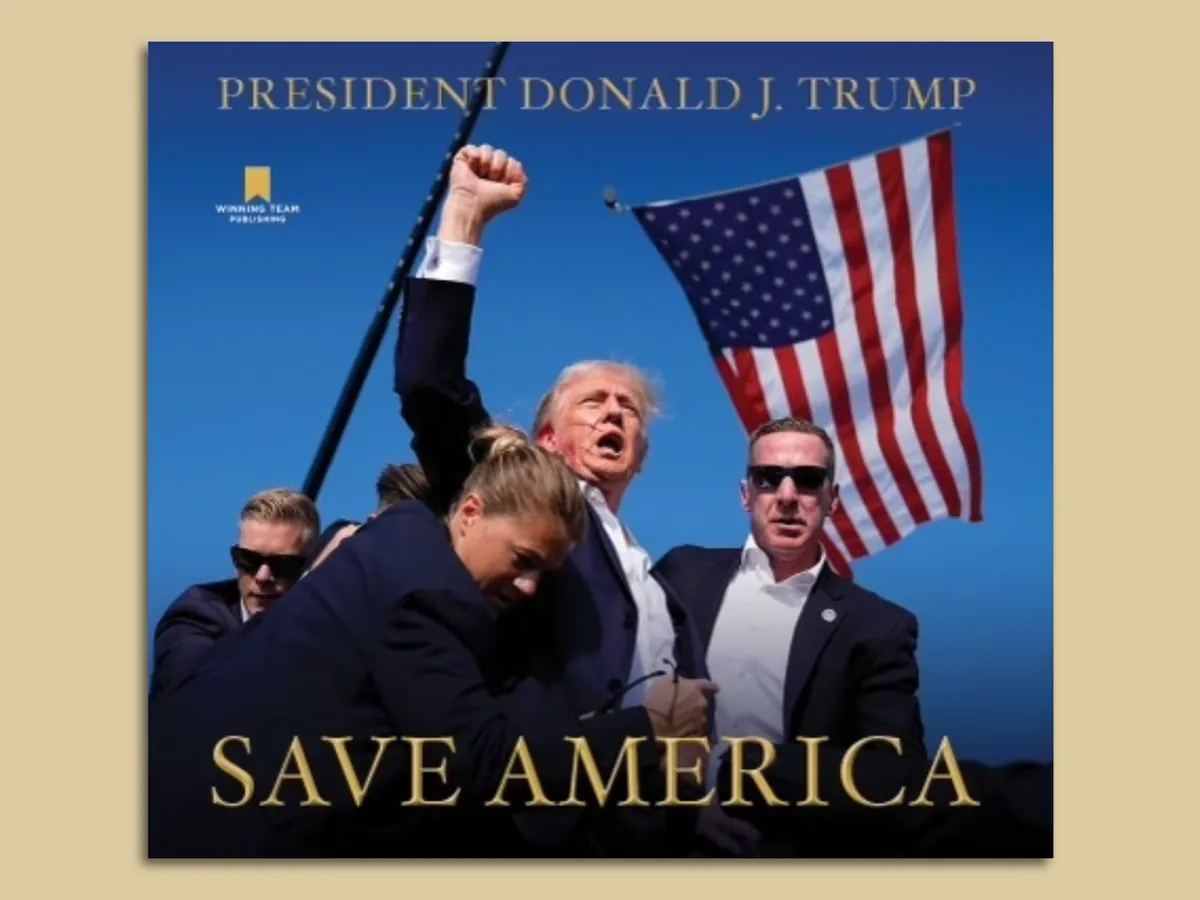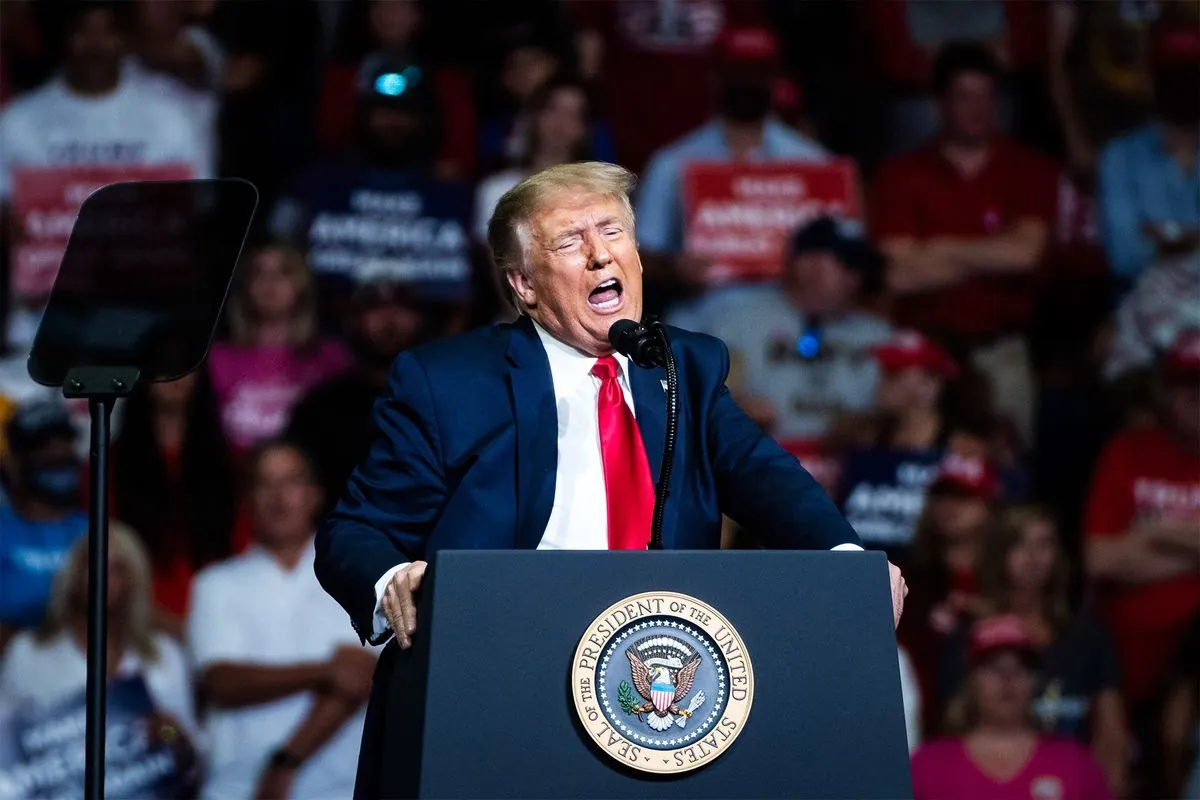Trump's "Save America": A Visual Ode to Self-Promotion
Donald Trump's new photobook "Save America" offers a lavish display of self-promotion, lacking historical context and filled with peculiar commentary on world leaders and personal vendettas.

Donald Trump's latest literary venture, "Save America," has hit the shelves, offering a visual journey through his presidency and beyond. Priced at $99 plus shipping, this photobook presents a unique perspective on the 45th President's tenure and personal narrative.
Published by Winning Team, a right-wing publishing house founded by Sergio Gor and Donald Trump Jr., "Save America" arrives just two months before the upcoming presidential election. However, rather than serving as a traditional campaign biography, the book appears to exist in a realm where Trump never left office.
The volume's content is primarily composed of photographs, many sourced from the Donald J. Trump Presidential Library. These images depict Trump in various settings, from rallies to meetings with world leaders, consistently portraying him in a positive light.

One of the most striking aspects of the book is its lack of context. Photos are presented without dates, locations, or explanations, leaving readers to interpret the significance of each image independently. This absence of information significantly diminishes the potential historical value of the collection.
Trump's commentary throughout the book is notably sparse, with brief captions accompanying the images. These remarks often focus on crowd sizes and personal grievances rather than policy achievements or historical events. For instance, the book revisits the 2017 inauguration crowd size controversy, with Trump insisting it was "the Largest Inaugural Crowd EVER."
The book's treatment of world leaders is particularly noteworthy. Vladimir Putin, Viktor Orbán, and Kim Jong Un are portrayed positively, with Trump claiming to have "got along well" with them. In contrast, the book includes a scathing attack on Mark Zuckerberg, accusing him of plotting against the president.
"His mother was beautiful and wild. In the 1970s, she would go 'clubbing' with the Rolling Stones, but she was also somehow associated with Fidel Castro. She said he was 'the sexiest man I've ever met,' and a lot of people say that Justin is his son. He swears that he isn't, but how the hell would he know! Castro had good hair, the 'father' didn't, Justin has good hair, and has become a communist just like Castro."
This peculiar commentary on Justin Trudeau exemplifies the book's occasional descent into unsubstantiated claims and personal attacks.
"Save America" presents a carefully curated image of Trump, emphasizing his perceived successes while largely ignoring controversies and legal challenges. The book's approach to the January 6 events focuses solely on crowd size, avoiding mention of the violence that occurred.
In conclusion, "Save America" serves more as a visual testament to Trump's self-promotion than a comprehensive historical document. Its lack of context, selective narrative, and occasional outbursts against perceived enemies make it a unique, if not entirely informative, addition to political literature.


































